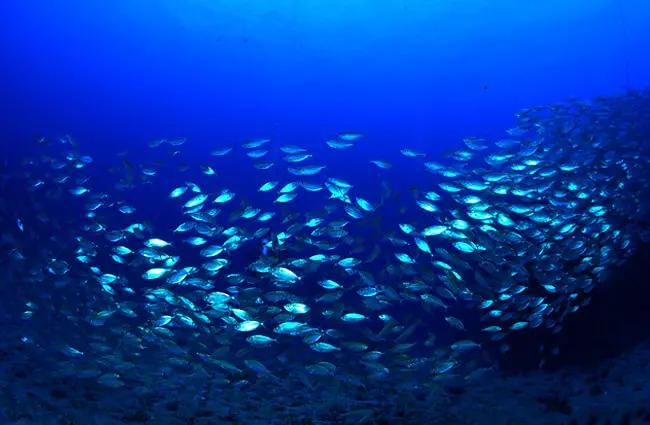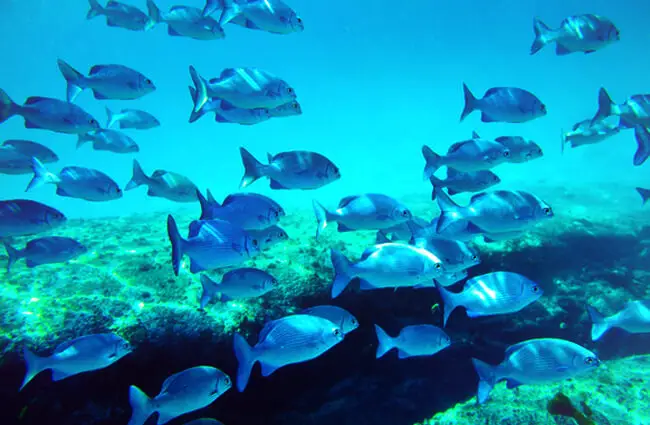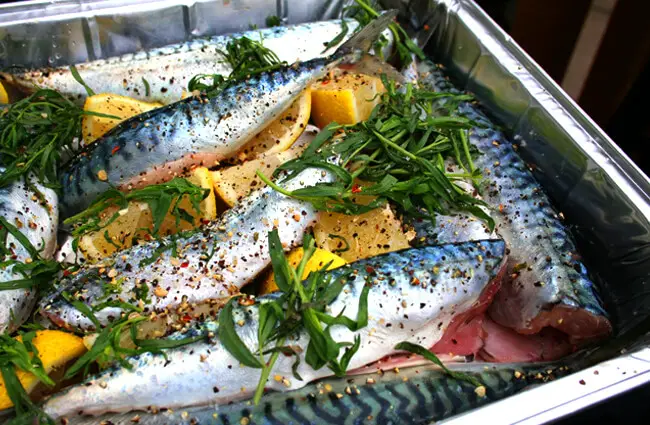The ocean’s vast blue holds countless wonders, and among its most dynamic inhabitants is the mackerel. These sleek, torpedo-shaped fish are not just a vital part of marine ecosystems but also a fascinating subject for anyone captivated by the natural world. From their incredible speed to their complex social structures, mackerel offer a window into the intricate dance of life beneath the waves.
Unveiling the Mackerel: An Introduction to a Pelagic Powerhouse
Mackerel are a diverse group of pelagic fish, meaning they primarily inhabit the open ocean, far from the seabed or shore. Belonging to the family Scombridae, which also includes tunas, these fish are renowned for their streamlined bodies, forked tails, and a series of finlets behind their dorsal and anal fins, all adaptations for rapid, sustained swimming. While many species exist globally, some of the most well-known include the Atlantic Mackerel (Scomber scombrus) and the Pacific Mackerel (Scomber japonicus), each playing a crucial role in their respective marine environments.

Where Mackerel Call Home: Habitats and Distribution
Mackerel are true cosmopolitans of the ocean, found in temperate and tropical waters across the globe. Their preferred habitat varies slightly by species, but generally, they thrive in coastal and offshore waters, often congregating near continental shelves and slopes where nutrient-rich upwellings support abundant food sources. Atlantic Mackerel, for instance, are common across the North Atlantic, from the eastern seaboard of North America to the coasts of Europe and North Africa. Pacific Mackerel inhabit the Pacific Ocean, ranging from Alaska down to Mexico and across to Asia. These fish are highly migratory, undertaking extensive journeys between their feeding grounds and spawning areas, often covering thousands of miles annually.
Physical Characteristics: Built for Speed and Survival
The mackerel’s appearance is a testament to its active, predatory lifestyle. Typically, these fish exhibit a striking iridescent blue-green back with distinctive wavy, dark stripes or spots that fade into a silvery-white belly. This countershading provides excellent camouflage in the open ocean, making them difficult to spot from above against the dark depths or from below against the bright surface. Their bodies are fusiform, tapering at both ends, which minimizes drag as they slice through the water. Large eyes provide excellent vision, crucial for hunting prey and detecting predators in the vast marine expanse. Most mackerel species range from 1 to 3 feet in length, though some can grow larger, with weights typically between 1 and 7 pounds.
The Mackerel’s Menu: A Carnivorous Diet
Mackerel are opportunistic carnivores, feeding primarily on smaller fish and invertebrates. Their diet largely consists of zooplankton, copepods, krill, small crustaceans, and the larvae of other fish. As they grow, larger mackerel will also prey on juvenile herring, anchovies, and sardines. They are filter feeders when consuming plankton, swimming with their mouths open to strain tiny organisms from the water. When hunting larger prey, they employ their speed and schooling tactics to corner and overwhelm their targets. This varied diet places them firmly in the middle of the marine food web, acting as both predator and prey.

The Life Cycle of Mackerel: From Spawning to Schooling
Evolutionary Journey: A Legacy of Adaptation
The evolutionary history of mackerel is deeply intertwined with the development of fast-swimming, pelagic predators. Their lineage can be traced back tens of millions of years, with fossil records indicating the presence of mackerel-like fish in the Eocene epoch. Over geological timescales, mackerel have evolved remarkable adaptations for life in the open ocean. Their highly efficient musculature, specialized fin structures, and sophisticated schooling behaviors are all products of natural selection, allowing them to exploit abundant food resources and evade a multitude of predators. The development of their unique countershading and streamlined body plan are classic examples of convergent evolution, where similar environmental pressures lead to similar solutions in unrelated species.
Mating and Reproduction: A Strategy of Abundance
Mackerel typically reach sexual maturity between 2 and 3 years of age. Spawning usually occurs in spring and early summer, often in specific offshore areas where conditions are favorable for egg and larval development. Female mackerel are incredibly prolific, releasing hundreds of thousands to millions of pelagic eggs into the water column. These eggs are buoyant and drift with the currents, increasing their dispersal. Fertilization is external, with males releasing sperm simultaneously. The eggs hatch within a few days, producing tiny larvae that are initially planktonic. These larvae feed on zooplankton and grow rapidly, eventually developing into juvenile fish that join the vast schools of their species. The strategy of producing a massive number of eggs is a common reproductive approach among pelagic fish, compensating for high mortality rates among eggs and larvae.
Ecosystem Contribution: A Cornerstone of Marine Food Webs
Mackerel are indispensable to the health and balance of marine ecosystems. As mid-trophic level predators, they form a critical link in the food chain, transferring energy from smaller organisms to larger predators. They are a primary food source for a wide array of marine animals, including larger fish such as tuna, cod, and sharks, as well as marine mammals like dolphins, porpoises, and whales. Seabirds, too, rely heavily on mackerel, especially during breeding seasons when they need to provision their young. Their schooling behavior, while a defense mechanism against predators, also makes them a concentrated food source, supporting the biodiversity of the open ocean. Without mackerel, the intricate web of life in many marine environments would be significantly disrupted.

Mackerel and Humanity: A Shared History
Contribution to Human Culture and Cuisine
Mackerel have been a staple food source for coastal communities for millennia, deeply embedding themselves into human culture and cuisine. Their rich, oily flesh is highly nutritious, packed with Omega-3 fatty acids, vitamins, and minerals, making them a valuable part of a healthy diet. Across the globe, mackerel feature prominently in traditional dishes. In Japan, saba shioyaki (grilled mackerel) is a popular delicacy. In Europe, smoked mackerel is a common sight, and pickled mackerel is a traditional dish in many Nordic countries. The fish’s abundance and ease of capture have made it an accessible protein source, contributing to the culinary heritage and economic stability of countless fishing communities.
Interaction with Humans: Fishing, Conservation, and Observation
Human interaction with mackerel is primarily through fishing. Commercial fisheries target mackerel on a large scale due to their abundance and economic value. Recreational anglers also enjoy catching mackerel, often using light tackle from piers, boats, or shorelines. The popularity of mackerel has, at times, led to concerns about overfishing, prompting international efforts to implement sustainable fishing practices, quotas, and management plans to ensure healthy mackerel populations for future generations. Responsible fishing and consumption choices are crucial for maintaining this vital marine resource.

Encountering Mackerel: Tips for Enthusiasts and Observers
Finding Mackerel in the Wild: A Guide for Animal Lovers
For those eager to observe mackerel in their natural habitat, understanding their behavior and preferred locations is key. Mackerel are schooling fish, meaning they travel in large, dense groups. This makes them easier to spot, especially when they are feeding near the surface.
- Coastal Waters: During warmer months, mackerel often move closer to shore, particularly in areas with strong currents or rocky outcrops that attract their prey. Piers, jetties, and headlands can be excellent vantage points.
- Offshore Banks and Reefs: Commercial and recreational fishing boats often target mackerel over offshore banks, reefs, and underwater structures where food is plentiful.
- Time of Day: Mackerel are often most active at dawn and dusk, though they can be caught throughout the day, especially if a feeding frenzy is underway.
- Signs of Activity: Look for diving seabirds, which often indicate schools of baitfish being driven to the surface by mackerel or other predators. Ripples or disturbances on the water’s surface can also betray the presence of a large school.
- Boating: A boat offers the best opportunity to find mackerel schools in open water. Sonar can help locate schools beneath the surface.
What to Do if You Encounter Mackerel in the Wild (for Hikers/Observers)
While hikers are unlikely to encounter mackerel directly on a trail, those exploring coastal areas, kayaking, or boating might.
- Observe from a Distance: If you spot a school of mackerel, maintain a respectful distance. Disturbing feeding or schooling behavior can stress the fish and disrupt their natural patterns.
- Do Not Interfere: Avoid attempting to touch or interact with wild fish. This can be harmful to both the fish and potentially to you.
- Respect the Environment: If you are on a boat, be mindful of your wake and noise levels. Do not discard any trash or pollutants into the water.
- Photography: Capture their beauty with a camera, but always prioritize the well-being of the animals.

Mackerel in Captivity: Considerations for Zookeepers
Keeping mackerel in a captive environment, such as a public aquarium, presents unique challenges due to their pelagic nature and schooling behavior. Aspiring zoologists and zookeepers should be aware of the specific requirements to ensure their well-being.
- Tank Size and Shape: Mackerel are fast, active swimmers that require immense space. A large, circular or oval tank is ideal to prevent them from colliding with corners and to allow for continuous schooling. Tanks should be hundreds of thousands of gallons, if not millions, to accommodate even a small school.
- Water Quality: Pristine water quality is paramount. Mackerel require highly oxygenated, clean, and stable marine water parameters (salinity, temperature, pH, ammonia, nitrite, nitrate). Robust filtration systems, including biological, mechanical, and chemical filtration, are essential.
- Diet: A varied diet of high-quality, appropriately sized marine fish (e.g., herring, capelin, sardines) and crustaceans, often supplemented with vitamins, is necessary. Feeding should mimic their natural feeding patterns, potentially involving multiple smaller feedings throughout the day.
- Schooling Needs: Mackerel are obligate schoolers. Keeping them individually or in very small numbers will lead to stress and poor health. A significant school (dozens to hundreds, depending on tank size) is crucial for their psychological and physical well-being.
- Environmental Enrichment: While open water fish have less need for complex structures, strong currents and open swimming space serve as their primary enrichment. Lighting cycles should mimic natural daylight.
- Health Monitoring: Regular observation for signs of stress, disease, or injury is vital. This includes monitoring swimming patterns, appetite, and physical condition. Water quality parameters must be checked daily.
What to Avoid in Captive Mackerel Care:
- Small or Rectangular Tanks: These will cause stress, injury from collisions, and prevent natural schooling behavior.
- Poor Water Quality: Fluctuations or degradation in water parameters can quickly lead to disease and mortality.
- Inadequate Diet: A monotonous or nutrient-deficient diet will compromise their health and immune system.
- Isolation: Keeping mackerel alone or in insufficient numbers is detrimental to their social and physiological needs.
- Sudden Changes: Avoid abrupt changes in water temperature, salinity, or lighting, as mackerel are sensitive to environmental shifts.
- Overcrowding: While they school, too many fish in a given volume will lead to stress, aggression, and poor water quality.

Fascinating Facts About Mackerel
- Incredible Speed: Mackerel are among the fastest fish in the ocean, capable of bursts of speed exceeding 35 miles per hour (56 km/h).
- No Swim Bladder: Unlike many fish, some mackerel species lack a swim bladder, which means they must constantly swim to maintain buoyancy. This contributes to their active lifestyle.
- Thermo-Regulation: While not as pronounced as in tuna, some mackerel species exhibit a degree of regional endothermy, allowing them to maintain warmer body temperatures in certain muscles, enhancing their swimming performance.
- Distinctive Markings: The wavy, dark stripes on their backs are unique to each individual, much like fingerprints, though this is difficult to observe in a fast-moving school.
- Short Lifespan: Most mackerel species have a relatively short lifespan, typically living for 5 to 10 years in the wild.
- Schooling for Safety: Their massive schools, sometimes numbering in the millions, are a primary defense mechanism, confusing predators and reducing the chance of any single individual being caught.
- Indicator Species: Mackerel populations can serve as an indicator of ocean health, with their abundance and distribution reflecting changes in water temperature, food availability, and overall ecosystem well-being.
Conclusion: The Enduring Legacy of the Mackerel
From their dazzling speed and intricate schooling behaviors to their vital role in marine ecosystems and human cultures, mackerel are truly remarkable fish. Their story is one of adaptation, survival, and interconnectedness within the vast ocean. Understanding these pelagic powerhouses not only enriches our appreciation for marine life but also underscores the importance of responsible stewardship of our planet’s aquatic resources. Whether observed in the wild, studied in an aquarium, or enjoyed on a plate, the mackerel continues to inspire awe and curiosity about the wonders of the deep.

![Red Angus Closeup of a beautiful Red Angus cowPhoto by: U.S. Department of Agriculture [pubic domain]https://creativecommons.org/licenses/by/2.0/](https://animals.net/wp-content/uploads/2020/03/Red-Angus-4-238x178.jpg)




![Red Angus Closeup of a beautiful Red Angus cowPhoto by: U.S. Department of Agriculture [pubic domain]https://creativecommons.org/licenses/by/2.0/](https://animals.net/wp-content/uploads/2020/03/Red-Angus-4-100x75.jpg)

